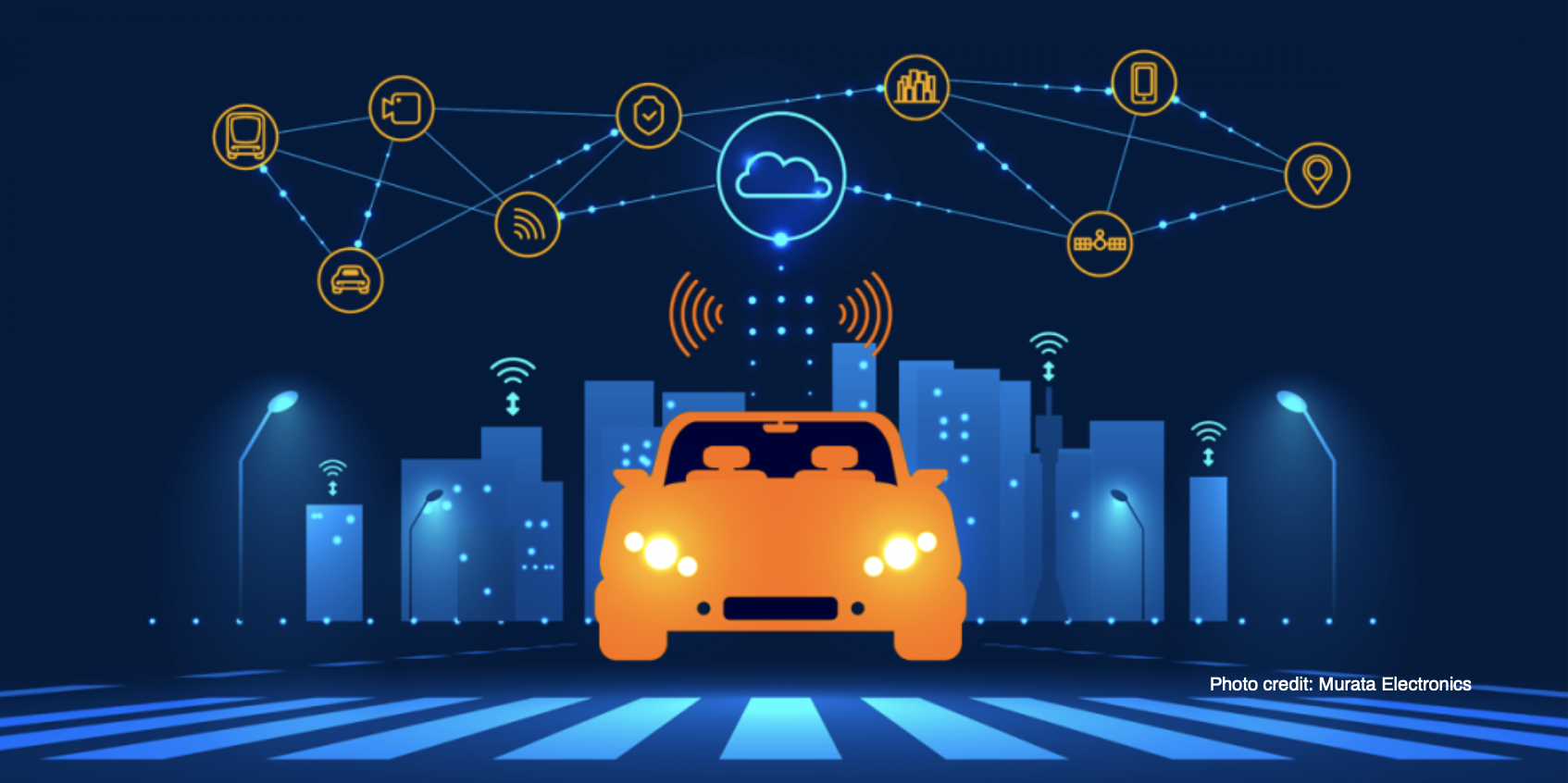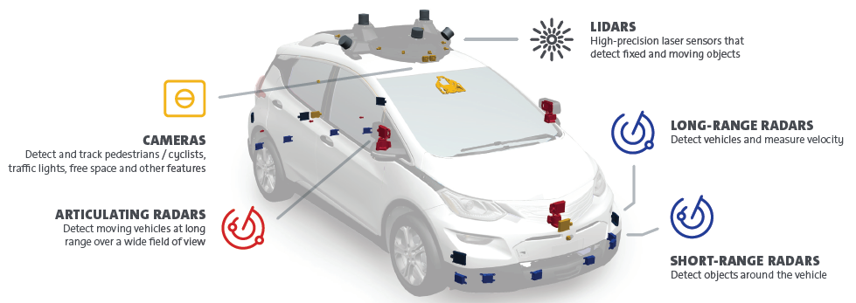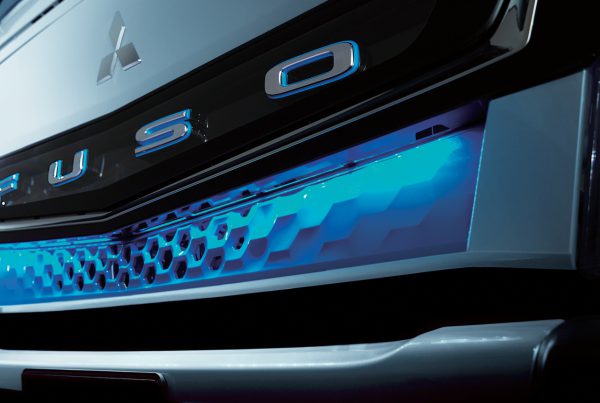An intimate link has always existed between mobility and innovation. From the time of coal-fired locomotives to the assembly line to harnessing green energy, such connection has long been fueling new transport solutions in the auto industry.
The Nagaoka Review spoke with Anthony Swartz to discuss what the autonomous driving market will look like in the future.
Anthony Swartz, Sr. Technical Sales Engineer at Murata
Based in the San Francisco Bay Area, Swartz works as the Sr. Technical Sales Engineer for Mobility at Japanese electrical/electronic manufacturing company Murata.
His role is to figure out the new automotive market that is developing in the West Coast.
Swartz narrated how, in the United States, Detroit was always the heart of the automotive market, with the Big Three—General Motors, Ford Motor Company, and Fiat Chrysler Automobiles US—leading the industry.
Lately, however, a radical shift started to emerge, with Artificial Intelligence (AI), autonomous driving, autonomous taxis, and autonomous shipping and freight entering the picture.
“So what I do,” he explains, “is help these key large companies in the Bay area go to that next generation.”
For Swartz, helping these companies means bridging certain gaps.
For example, he assists software engineers—who previously specialized on the consumer or optical markets such as Apple or Cisco, but now find themselves working at automotive companies—in making the necessary adjustments when integrating technology into mobility. From a safety and regulatory standpoint, there’s a big leap from designing a consumer product to an automotive one.
The Future of Mobility
“You have different pockets of people that have different opinions on that,” he offers. “There are people who say self-driving cars will never, ever be a thing. It won’t happen in the next five or ten years. Then, you have people who are saying that in two years, all cars are going to be electric and self-driving.”
But there is one thing we need to focus on, according to Swartz: sensors.
In particular, he believes the investment and research need to focus on adding sensors that can offer the safety level of at least a human driver.
High tech sensors will be key to autonomous vehicles. Photo Credit: Extreme Tech
“Better is best, but the best is very expensive right now” he says.
Ensuring that autonomous vehicles achieve an acceptable level of safety will only drive bigger opportunities and better customer experiences.
“Eventually, future car owners aren’t going to care about the engine size, how big the tires are, or what the vehicle actually looks like,” he says.
Swartz believes that the differentiation will happen based on the experiences that safe and autonomous vehicles can deliver to customers.
“In the future, I think they’re going to be very simple pod-like structures where there’s more focus on the inside of the vehicle, not the outside. Once you jump in, there’s entertainment for you, or productivity for you. You have huge entertainment screens for long drives. You have comfortable seats inside similar to the luxury of a very fancy bus and productivity tools that let you do work even when caught in traffic,” he adds.
“And once these vehicles have gotten to a high level of trust, I do see benefits on time management as well where parents can entrust to have these vehicles to take or pick up their kids from school,” Swartz foresees.
Value for Customers in Urban Communities
Swartz also notes the rise of ridesharing or mobility as a service in the future. In California at least, he has seen the increasing popularity of renting electric rideshare scooters.
There, people pay three bucks to ride the vehicle for three or four kilometers.
Buying the vehicle, however, is not as common.
He thinks the hefty price tag for these scooters—which is around $2500—is why people are discouraged. These vehicles value is in not owning them, but renting them. Short term use has the benefits of no storage, no parking fees, and no worry of theft.
That said, people still want to enjoy the technology, equipped with GPS, Wi-Fi, and cellular connection, and are willing to shell out the money to rent the scooters.
Swartz believes this convenience, freedom, and affordability may eventually be offered by cars with this lease model.
“When companies add multiple LIDAR, radar, high end camera, and different sensors to a car, the vehicle itself will be around $250,000,” he says.
“Now, some people might want that, but for the majority of people, they want the freedom where they can just grab their phones, request a ride, car comes up, drops them off. No huge upfront costs. It’s very affordable and very convenient.”
“I eventually see that in really dense urban environments, there’s going to be very, very little incentive for you to own your own vehicle. And most likely a lot of the major car companies essentially are going to be building these lease type of vehicles,” he adds.
Meantime, he also believes these changes will improve public transportation—especially in areas where it is very poor, like in the majority of the United States outside of New York and Chicago.
The shift to the use of autonomous taxis may also increase productivity and safety, among other benefits.
New Businesses, More Transformation
For organizations, the shift in the consumer’s riding preferences such as rideshare will also transform business models. Car companies that do not have certain capabilities may need to start making some partnerships in places they never would think of.
“So, for example, instead of partnering with a tier one hardware supplier, a car manufacturer can partner with a data analytics company that can provide and analyze data.”
“In terms of geography, it’s shifting from the Detroit area, out to the West coast. And when I think about the rest of the world, you have China being a much bigger player today. Back in the day, China was building many of the vehicles and most of the electronics. Now they’re designing and they’re also kind of leading. They have autonomous shuttles at airports and they have big push from their government to shift away from internal combustion engines to hydrogen or lithium batteries. There are Chinese electric vehicle companies today that want to compete against Tesla and are going to start selling vehicles and having dealerships in the US. So I think that’s kind of a big milestone,” Swartz explains.
Future Students
Asked how universities should prepare their students for the future of mobility, he responds:
“The biggest need I see is the need for electrical engineers. They need designers that are going to go from concept to design of the vehicle.”
He continues: “I look at job listings today and 50% of them are software engineers, AI, advanced computing. They’re more software oriented but you’ll still need hardware people—because we need to develop sensors.”
“Basically where we’re at today, we can’t hit a full level five autonomous vehicle with the technology we have. So we need to push that hardware farther. But the most important thing is really how that software is interpreting it. So if you think about the five senses that you have as a human, if the car had the five senses, you need to relate and tie those together in a way, where you say, all right, we trust the data from this sensor. And if we mix it with the data from this sensor, this one, and this one and this one, here’s our percentage of error and here’s the actions that we’re going to take. We have to be able to do that very, very, very fast,” he explains.
“I’m seeing a huge shift towards software for mobility, for automotive space. But there’s still a need to develop talents who specialize in hardware. Both will be very important, and they are intertwined more than ever” he concludes.













